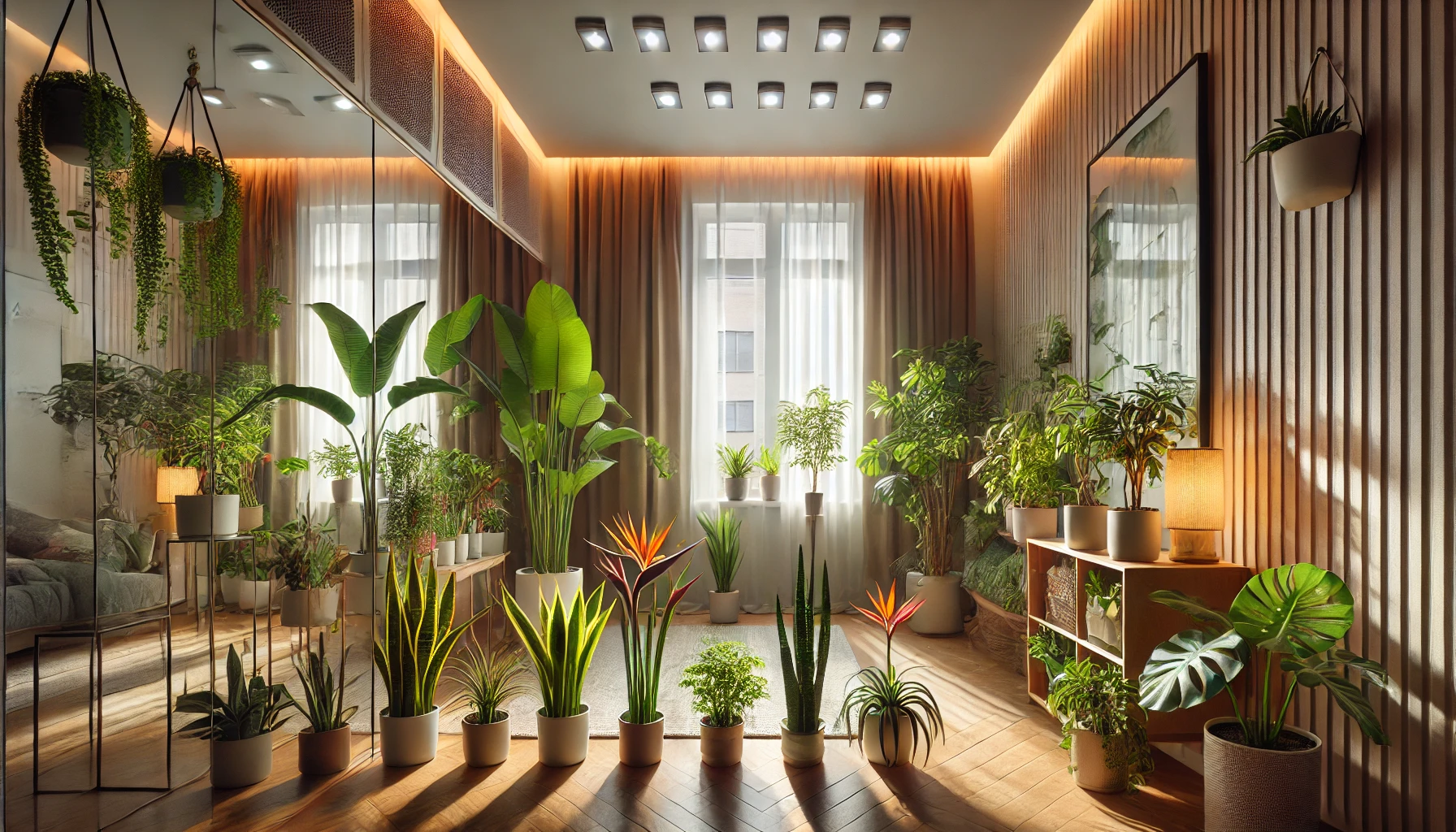Lighting is one of the most critical factors in the success of growing exotic plants indoors. In a small apartment, finding the right balance between available natural light and artificial solutions can be challenging—but with the right strategies, your exotic plants can flourish.
This guide explores how to assess your apartment’s lighting conditions and how to optimize them to suit a variety of exotic plants.
Understanding Plant Light Requirements
Every plant has a different relationship with light, especially exotic varieties. Light affects not only growth but also flowering, coloration, and overall health.
Categories of Light Preferences:
- Low Light: No direct sunlight. Suitable for plants that grow under tree canopies.
- Medium/Indirect Light: Bright light that doesn’t hit the plant directly—ideal for most exotic indoor plants.
- Bright/Direct Light: Several hours of direct sun—perfect for sun-loving species.
Common Light Terms:
- Foot-candles (fc): A measurement of light intensity.
- Low light = 50–250 fc
- Medium light = 250–1,000 fc
- Bright light = 1,000+ fc
Natural Light in Small Apartments
Your apartment’s layout and orientation will greatly affect how much natural light your plants receive.
Window Orientation:
- North-facing windows: Receive the least light.
- East-facing windows: Gentle morning light—great for most exotic plants.
- South-facing windows: Provide the most light throughout the day.
- West-facing windows: Harsh afternoon light—suitable for hardy sun-loving plants.
Light-Optimizing Tips:
- Use mirrors to reflect light deeper into your apartment.
- Place plants close to windows, but avoid touching cold glass.
- Use sheer curtains to diffuse intense sunlight and protect sensitive plants from leaf burn.
Best Exotic Plants by Light Level
Low Light:
- ZZ Plant (Zamioculcas zamiifolia)
- Peace Lily (Spathiphyllum)
- Snake Plant (Sansevieria)
Medium/Indirect Light:
- Calathea
- Philodendron
- Pothos (Epipremnum aureum)
Bright/Direct Light:
- Bird of Paradise (Strelitzia)
- Aloe Vera
- Fiddle Leaf Fig (Ficus lyrata)
Using Grow Lights in Apartments
If your apartment lacks sufficient natural light, grow lights are a powerful alternative.
Types of Grow Lights:
- LED Grow Lights: Energy-efficient and ideal for small spaces.
- Fluorescent Lights: Good for seed starting or shelf gardens.
- Full-Spectrum Bulbs: Mimic natural daylight and support all growth stages.
Placement & Timing:
- Keep grow lights 6–12 inches from the top of your plants.
- Use timers to maintain 10–14 hours of light per day.
- Adjust distance depending on the plant’s sensitivity and light needs.
Signs Your Plant Needs More or Less Light
Needs More Light:
- Leggy or elongated stems
- Pale or yellowing leaves
- Slow or stunted growth
Needs Less Light:
- Brown, scorched leaf tips
- Wilting despite watering
- Leaves curling or drooping during peak sunlight hours
Creating a Lighting Plan for Your Space
To make the most of your lighting conditions:
- Map your apartment and identify the light level in each area throughout the day.
- Group plants by light needs and match them to the best locations.
- Use plant stands, hanging baskets, or shelves to move plants closer to windows or artificial light sources.
Final Thoughts: Let There Be Light
Lighting is the life force of exotic plants. In small apartments, where light can be limited, understanding your plants’ needs and making small adjustments—like adding a grow light or repositioning a pot—can make all the difference. With this guide, you’ll have everything you need to provide the right amount of light and keep your exotic indoor garden thriving.
